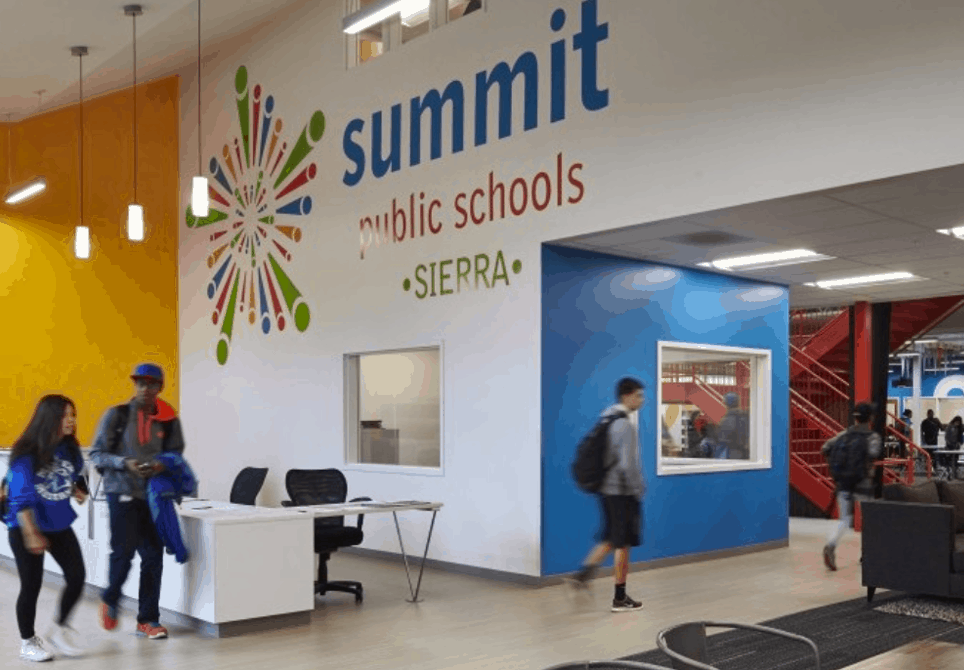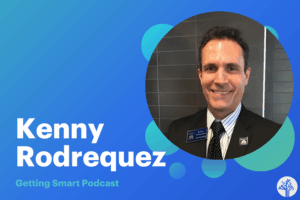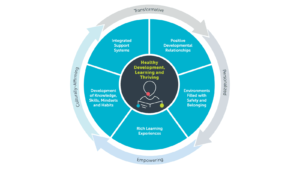Human-Scale at Scale: Personalization, But to What End?

By Tom Beresford
This blog was first published on Medium.
So far on my tour of innovative, learner-centered schools in the U.S., I’ve had the pleasure of seeing two different models in action — both innovative in their own right, but both with quite different mindsets to why they are taking a learner-centered approach.
Big Picture Learning feels to be a bit of a Rockstar of the personalization landscape. It’s personalization in the purest sense — students benefit not just from working at their own pace, and in ways that suit them, but their curriculum is also explicitly tailored around student’s individual passions, through a fully fledged advisory model.
Most teachers reading this will be utterly terrified of such a prospect. But boy oh boy, the rewards of doing this well are phenomenal — check out this video from New Village Academy in Los Angeles. Get’s me every time.
Summit Public Schools
Summit Public Schools is like the new, cool AND smart kid on the block.
Originating in Silicon Valley, and known for its unrelenting focus on rigour, Summit has designed a highly sophisticated model, supported by a Facebook-backed digital platform that enables a high level of individualization and differentiation for students.
Students progress through individualised playlists of online content at their own pace, and teachers provide face-to-face support on a flexible and adaptive as-needed basis.
Both Big Picture and Summit are innovative models, responding to an out-of-date system by saying clearly and loudly that learning now needs to be designed with the student at the centre, not as part of an industrial, factory-style model.
But they differ, not just in model specification, but in terms of what they are trying to achieve through taking a learner-centered approach.
Summit’s model is an innovative upgrade on learner-centered models, utilising technology to great effect. It’s a model that looks to make learning more effective for each and every student. Their Personalized Learning Plans and Personalized Learning Time play crucial roles in building authentic and meaningful voice and choice into each student’s learning, making school work for each student.
Big Picture Learning
Big Picture Learning is more radical in its rethink of school. Over the last decade, is has challenged the idea that learning should happen in isolation of the real world.
Fundamental to the Big Picture curriculum are the internships that students do throughout the year, at locations ranging from City Hall to the local skateboarding shop. Students learn how to be adults by being with adults, developing personal relationships with experts in their chosen field of study.
Unlike Summit’s Expeditions — all day electives in two-week sessions — Big Picture’s internships are integrated into the learning model, rather than being add-ons. Furthermore, Big Picture has tried to broaden what we consider to be achievement in education, going beyond knowledge, beyond even competencies, grades and certification to consider real world successes — often demonstrated in portfolios, exhibitions and other internship outcomes.
The difference between these two innovative models boils down to how much they are investing in student agency — beyond voice and choice. The Summit model is probably best described as highly effective student-centred teaching; the teacher is still very much the leader of learning. Big Picture, on the other hand, allows students to really take the wheel; they are the architects of their own learning.
Scaling Strategy Breakdown
Interestingly, personalizing learning to these two different ends has shaped the nature of Summit and Big Picture’s scaling strategies.
Summit’s highly scaffolded model is mirrored in its approach to growth. New schools adopt the model to high fidelity, in association with the Summit Charter Management Organization. Summit’s digital platform and highly sophisticated professional development programme are cornerstones of a rigid yet rigorous scaling strategy.
In comparison, adopting the Big Picture model is more of a transformation journey. It’s a big shift that asks a lot of school leaders. Hearts and minds have to be won over, and that requires individuals to have their own ‘aha’ moments and understand the application of the model to their context and in their own way. For that reason, Big Picture Regional Directors support schools to go through an individualised change journey — “just like our one student at a time, we think about adoption as one school at a time.”
Both strategies have their respective merits and challenges and bring helpful insights about how we can achieve human-scale at scale.
For more, see:
Tom Beresford is a Project Coordinator and Researcher at Innovation Unit. Follow him on Twitter: @t_bez12.
Stay in-the-know with all things EdTech and innovations in learning by signing up to receive the weekly Smart Update.











0 Comments
Leave a Comment
Your email address will not be published. All fields are required.